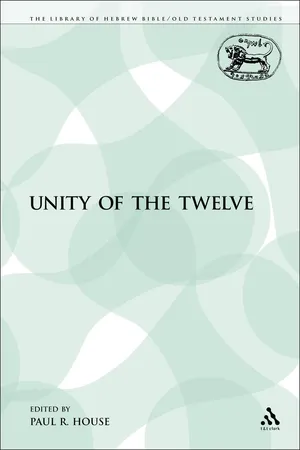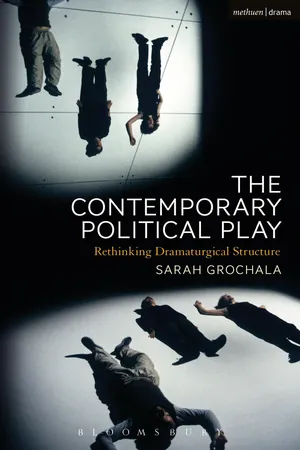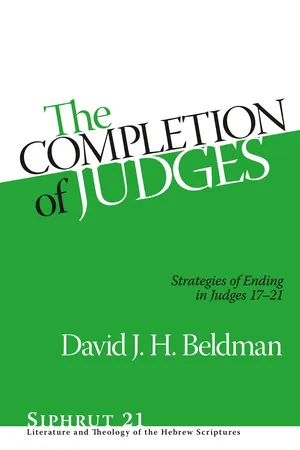Literature
Plot
The plot in literature refers to the sequence of events that make up a story. It includes the introduction of the main characters, the development of the conflict, and the resolution of the conflict. The plot is the framework that holds the narrative together and provides the structure for the story's progression.
Written by Perlego with AI-assistance
Related key terms
1 of 5
6 Key excerpts on "Plot"
- eBook - PDF
Matthew's Narrative Web
Over, and Over, and Over Again
- Janice Capel Anderson(Author)
- 1994(Publication Date)
- Sheffield Academic Press(Publisher)
The examination of both types in terms of Plot provides new insights. A comprehensive Plot outline will not be offered since repetition is only one factor involved in the development of the Plot. 3. General Description of Plot a. Definitions Literary critics have defined Plot in various ways since Aristotle spoke of 'the action', the 'arrangement of incidents'. 1 Most emphasize one or more of the following: the temporal or sequential element, motivation, or the effects of the arrangement of events on the reader. Various distinctions have been made between (a) story and Plot, and (b) the fable or story and the sujet. E.M. Forster emphasizes the importance of motivation when he defines a story as 'a narrative of events arranged in their time-sequence' and a Plot as 'a narrative of events, the emphasis falling on causality'. 2 'The king died and then the queen died, is a story', he writes. While, 'The king died, and then the queen died of grief is a Plot.' 3 The distinction between fable and sujet emphasizes the effects of the 1. Loeb edition, Poetics 6.8. Typical modern definitions are those of Scholes and Kellogg: 'Plot can be defined as the dynamic, sequential element in narrative literature. Insofar as character, or any other element in narrative becomes dynamic, it is part of the Plot' (Nature, p. 207); and Abrams: 'The Plot in a dramatic or narrative work is the structure of its actions, as these are ordered and rendered toward achieving particular emotional and artistic effects' (Glossary, 3rd edn, p. 127); and R.S. Crane, 'the particular temporal synthesis effected by the writer of the elements of action, character, and thought that constitute the matter of his invention... with a power to affect our opinions and emotions in a certain way' (The Concept of Plot and the Plot of Tom Jones in idem [ed.], Critics and Criticism [Chicago: University of Chicago Press, abridged edn, 1957 (1952)], pp. - eBook - PDF
- Paul R. House(Author)
- 1990(Publication Date)
- Sheffield Academic Press(Publisher)
Chapter 4 Plot AND THE TWELVE Plot: A Working Definition Now that some understanding of the genre and structure of the minor prophets has been achieved, it is necessary to exam-ine related literary aspects of the Twelve to test further the possibility that the books are a unified construction. One of the most basic of all artistic aspects is Plot. As was noted in Chapter 3, Plot is very closely aligned with structure, since both are related to how a work holds together and functions as a unit. Structure reveals Plot and Plot determines structure. Still, the two terms have several mutually exclusive duties in literary criticism and thus deserve separate treatment. There will of necessity be some overlap between the discussion of structure and the analysis of Plot, but hopefully this overlap will aid the perception of newly introduced ideas rather than merely repeat what has already been said. Scholars define Plot in a number of ways. Some view it as a structural device, some as a means of introducing and devel-oping characters, some as simply a pattern of events, and some as a means of ordering the emotions of the reader. With so many possible meanings for 'Plot' it is prudent to once more go back to Aristotle for a working definition upon which a larger outline of the term can be constructed. Aristotle believed that a Plot should include some very specific elements if it is to be effective. First of all, it must reveal a definite progression of events that take place due to causal necessity: Now, according to our definition, Tragedy is an imitation of an action that is complete, and whole and of a certain mag-nitude. A whole is that which has a beginning, a middle, and an end. A beginning is that which does not itself follow 112 The Unity of the Twelve anything by causal necessity, but after which something naturally is or comes to be. - eBook - PDF
The Contemporary Political Play
Rethinking Dramaturgical Structure
- Sarah Grochala(Author)
- 2017(Publication Date)
- Methuen Drama(Publisher)
From this perspective, story is thought of as the stable entity. Plotting is the act of interpretation. As literary theorist Jonathan Culler observes, there are ‘various contrasting ways of viewing and telling a given story, and this makes “story” an invariant core, and a constant against which the variables of narrative presentation can be measured’ (Culler 1981: 170). Meaning is located in the different ways the same story is Plotted by different writers. The relationship between Plot and story can easily be turned upside down. Plot can be seen as the raw material from which audiences construct stories. Elam argues that, while watching a play, the spectator works ‘at piecing together into a coherent structure the partial and scattered bits of dramatic information that he receives from different sources. The effective construction of the dramatic world and its events is the result of the spectator’s ability to impose order upon a dramatic content whose expression is in fact discontinuous and incomplete’ (Elam 2002: 88–9). This approach assumes that audiences, like playwrights, are experts in dramatic structure. The playwright constructs a play with reference to a set of rules. The audience then use the same rules to decode it, building their own story by making sense of the incomplete information given in the Plot. Each spectator ‘anticipates events, attempts to “bridge” incidents whose connection is not immedi-ately clear and generally endeavours to infer the overall frame of action from the bits of information he is fed. In trying to project the possible world of the drama, the spectator is principally concerned with piecing together the underlying logic of the action’ (Elam 2002: 108). Story is no longer the stable entity; it is a shifting construct within the mind of the spectator: ‘an abstraction from the - eBook - PDF
Crackle And Fizz: Essential Communication And Pitching Skills For Scientists
Essential Communication and Pitching Skills for Scientists
- Caroline Van Den Brul(Author)
- 2013(Publication Date)
- ICP(Publisher)
Each one of these avenues had the potential to provide clues to help solve the mystery around the sarcophagus. This, for Meet the Ancestors , was what we required for our Plot. The Plot is an account of the events or episodes which follow when a Character decides he wants something badly enough to make efforts – sometimes strenuous, sometimes risky – to reach his goal. It is about the actions a Character takes to overcome all the Obstacles blocking his way; to triumph or fail in his challenge. The majority of narrative Plots within science research are like each edition of Meet the Ancestors – straightforward quests. Science itself is a quest; a searching journey by the curious, a hunt to find things and find things out. Most science, however humdrum and ordinary it may seem to the researcher at times, has qualities of strangeness which are interesting to an Audience. Research, by its very nature, has a natural story structure so it has the potential to be made dramatic and absorbing for an Audience. The communication task is to elevate what at first sight might seem an ordinary account into one that is as engaging as it can legiti-mately be, both for the Audience and for the creator. It means creating a Plot. In this chapter I shall refer briefly to three types of Plot which most commonly apply to communication made by scientists. They share the same basic components and follow a similar pattern. I shall use the simplest of narrative examples to show how a Plot is con-structed, and how it can be improved to make the story better. This does not mean altering the facts, it means choosing which episodes to include and making them work for the story. In other words, using every opportunity to make the story meaningful for the Audience; giving it crackle and fizz. Plot 117 The Different Kinds of Plot The nature of a Plot defines the kind of story that is being told. - eBook - PDF
The Completion of Judges
Strategies of Ending in Judges 17–21
- David J. H. Beldman(Author)
- 2017(Publication Date)
- Eisenbrauns(Publisher)
For Aristotle, life consists of a succession of meaningless actions and events. Stories give meaning to what would otherwise seem like random actions. To understand this point, Dowling gives the example of a person leaving the room to get a glass of water from the fridge. The action itself is mean- ingless until it is emPlotted into a meaningful narrative. Perhaps the indi- vidual was thirsty so he went to get a drink. On the other hand, perhaps the person was in an awkward conversation and used the drink of water as a pretext to escape the situation. 35 Configuring actions into a coherent nar- rative, therefore, involves making sense of motivations and causes. Thus, the act of narrating is the configuring of human action into a meaningful Plot. Here it is possible to distinguish between a chronicle of events and a story. 36 Plot, according to Ricoeur, is a “synthesis of the heterogeneous,” a 33. Ricoeur, Time and Narrative, 1: 3–4. 34. Dowling, Ricoeur on Time and Narrative, 1. 35. Ibid., 4–5. 36. To use E. M. Forster’s well-known example: “The king died and then the queen Chapter Two 62 “grasping together” of incidents into a story. 37 Or to put it in other words, Plot is “the intelligible whole that governs a succession of events in any story.” 38 At this point, he does not distinguish between the fundamental character of fictional narrative and that of historical narrative, except to note the referential character of each. In terms of their structural features, they are of a kind. 39 Ricoeur identifies three stages in mimetic activity, namely mimesis 1 , mi- mesis 2 , and mimesis 3 . The configuring of events into a Plot (emPlotment) is only one stage or dimension of the mimetic activity. EmPlotment (mime- sis 2 ) serves a mediating role between mimesis 1 and mimesis 3 . In his expla- nation of mimesis 2 , Ricoeur elucidates, among other things, the vital role of endings in narratives. - eBook - PDF
The Book You Need to Read to Write the Book You Want to Write
A Handbook for Fiction Writers
- Sarah Burton, Jem Poster(Authors)
- 2022(Publication Date)
- Cambridge University Press(Publisher)
35 – 4 – Plot and structure I Getting to grips with Plot This chapter will focus on the short story. There’s a practical rea- son for this: to make our points we shall need to summarise Plots, and it’s obviously neater and easier to do so with a brief narrative than a long one; our focus will also allow us to examine the dis- tinction between two main types of short story, the event-Plot story and the Chekhovian or ‘slice-of-life’ story. Although the event-Plot story is more or less restricted to shorter forms, much of what we have to say about Plot in relation to the short story can also be applied to the novel. We’ve seen that Plot and character are indivisible because char- acters make (and are made by) Plot. This is true even in very sim- ple moral tales such as Aesop’s fables and Jesus’s parables: while the characters are not highly developed they have characteristics which differentiate them (the improvident grasshopper and the diligent ant of the fable; the uncaring priest and Levite and the compas- sionate Samaritan of the parable) and which affect the outcome of the story. Jokes – which are often very short stories with a twist – can also follow a simple character-based, or rather characteristic- based, pattern. Any joke the English might tell about an Irishman, a Welshman or a Scotsman, for example, locates its comedic ele- ment in these stereotypical figures acting in character: each is supposed, for the sake of the joke, to be a fool, a thief or a miser respectively, and the joke finds its meaning from these assumed characteristics being played out in a specific context. So even the most basic Plots depend on some kind of character, however crude, being ascribed to the protagonist. They may behave in character The Book You Need 36 (the industrious ant) or out of supposed character (the parables’ first audience would have been prejudiced against Samaritans), but character remains a necessary element of the story.
Index pages curate the most relevant extracts from our library of academic textbooks. They’ve been created using an in-house natural language model (NLM), each adding context and meaning to key research topics.





